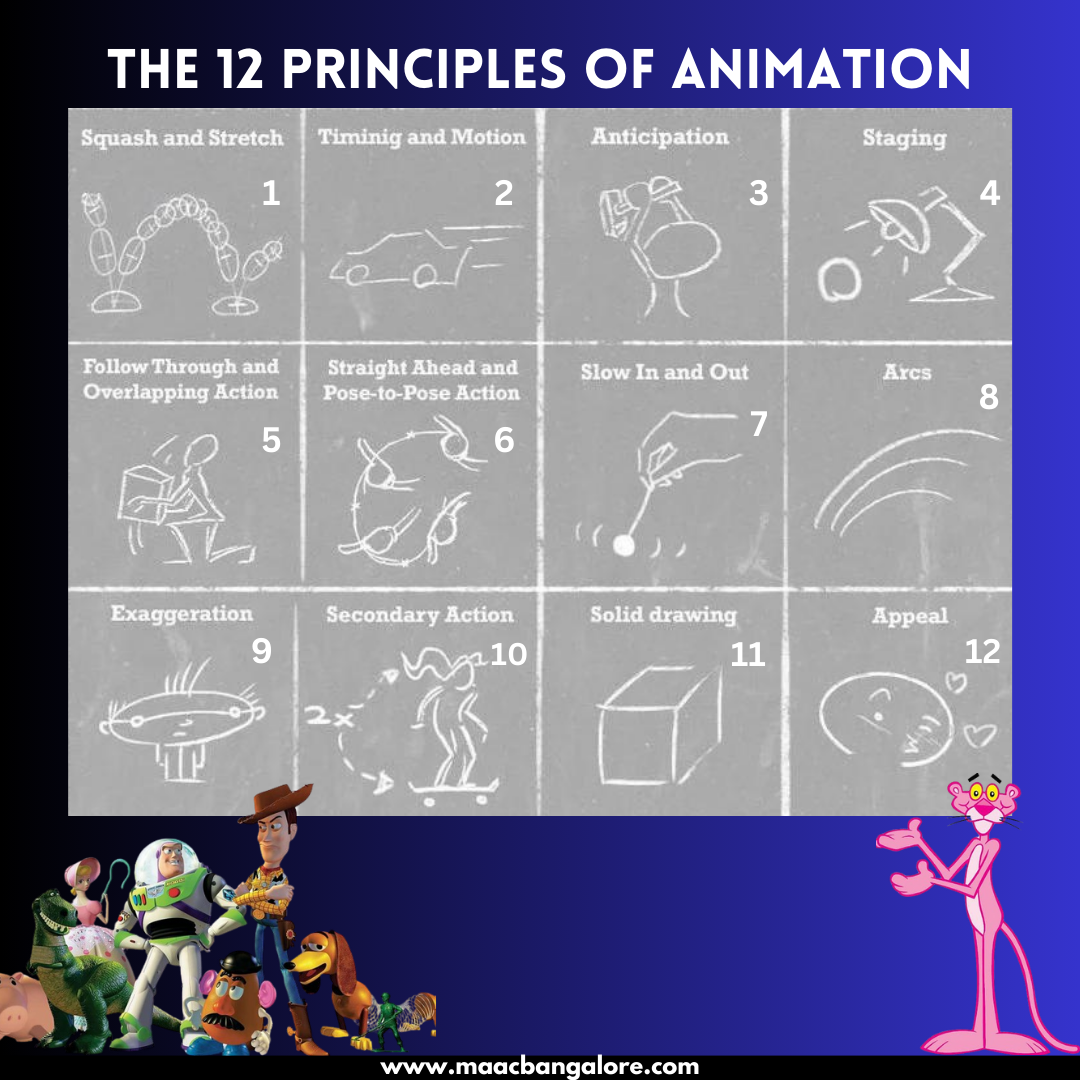The 12 Principles of Animation
A Comprehensive Guide
Animation is a captivating art form that brings characters and stories to life through the illusion of motion. Behind the seamless movement of animated characters lies a set of fundamental principles that animators follow to create compelling and realistic animations. These principles, collectively known as the “12 Principles of Animation,” were introduced by Disney animators Frank Thomas and Ollie Johnston in their book “The Illusion of Life.” Let’s delve into these principles to understand the magic that makes animated characters so lifelike and engaging.
What are the 12 Principles of Animation?
- Squash and Stretch:
This principle adds flexibility and elasticity to characters, making them appear more dynamic. When an object is in motion or undergoing force, it should compress (squash) or elongate (stretch) to maintain a sense of volume and weight.
- Anticipation:
Anticipation is a crucial element in animation that prepares the audience for the main action. By having a character make a subtle movement or gesture before the primary action, animators build anticipation, creating a more natural and engaging sequence.
- Staging:
Staging involves presenting an idea or story clearly through the positioning and timing of elements within a scene. Effective staging directs the audience’s attention to the focal point and enhances the overall storytelling.
- Straight Ahead Action and Pose to Pose:
Animators use two approaches to create animations. Straight Ahead Action involves drawing frame by frame from start to end, capturing the fluidity of motion. Pose to Pose, on the other hand, focuses on defining keyframes first and then filling in the intervals, allowing for better control over the animation’s structure.
- Follow Through and Overlapping Action:
These principles address the continuation of motion. Follow-through involves the termination of an action while Overlapping Action deals with the tendency of parts of the body to move at different rates. Together, they contribute to realistic and fluid motion.
- Slow In and Slow Out:
Real-world motion rarely starts and stops abruptly. Slow In and Slow Out emphasize the gradual acceleration and deceleration of an object, creating a more natural and visually pleasing movement.
- Arcs:
Almost all natural movements follow an arced trajectory. Whether it’s a swinging pendulum or a person’s arm movement, arcs add realism and fluidity to animations.
- Secondary Action:
Secondary actions complement the main action, adding depth and complexity to the character’s performance. These additional movements can convey emotions, reactions, or other simultaneous actions, enhancing the overall narrative.
- Timing:
Timing is the careful control of the spacing between frames to convey the speed, weight, and mood of an action. Precise timing is crucial for creating believable and impactful animations.
- Exaggeration:
Exaggeration involves emphasizing certain aspects of an action to make it more entertaining or expressive. While it may seem counterintuitive to realism, exaggeration is a powerful tool in animation that enhances storytelling and engagement.
- Solid Drawing:
Solid Drawing emphasizes the importance of understanding three-dimensional shapes and forms. Animators must think in three dimensions to create characters and scenes that feel tangible and realistic.
- Appeal:
The final principle, Appeal, refers to the likability and charm of characters. A character with strong appeal is more memorable and resonates with the audience. This principle encapsulates the importance of creating characters that connect emotionally with viewers.
In conclusion, the 12 Principles of Animation serve as a comprehensive guide for animators, providing a framework to create captivating and realistic animations. Whether it’s the subtle anticipation before a big movement or the careful timing of frames, these principles form the backbone of animation, allowing artists to bring their imaginative worlds to life with unparalleled charm and authenticity. In essence, the 12 principles of animation serve as a testament to the artistry and craftsmanship required to bring characters and stories to life in a way that resonates across cultures and generations.


Recent Comments